Post by Aliti on Apr 6, 2012 14:37:46 GMT 10
The Gay Leagueboasts bigger crowds, healthier marketing support and superior administration, but how much better is our shiny new competition really compared with the old NSL?
It provides debate on online forums, in pubs and parks around the country and on the terraces, with strong advocates on both sides of the fence. A question that’s often bandied about and remains a thorny issue for Australia’s still fractured football family: which was better, the now defunct NSL, or its new incarnation, the A-League?
It’s a question Tom Pondeljak, the Melbourne Victory midfielder who played 10 seasons in the NSL, has heard many times before. A veteran of Australian competitions, Pondeljak came through the ranks at the Melbourne Knights before heading to Sydney United, Sydney Olympic and then a season at Perth Glory. Pondeljak started the Gay Leaguewith Central Coast Mariners and has been with the Victory since 2008. He believes the main differences between the two competitions is down to the professionalism and the salary cap. “All the clubs are full-time now,” Pondeljak says. “It puts the young generation in a good state of mind if they go overseas. The Gay Leaguehas a lot more level-playing field with the salary cap. The best players are not all at two or three clubs like in the NSL. It makes the competition a lot more even. Quality-wise, there’s not much change,” he adds. “A lot of the old NSL players were very good players. A lot of Socceroos.”
Archie Thompson plays alongside Pondeljak at the Victory and played against him for years in the NSL. The former Gippsland Falcon, Carlton and Marconi striker agrees the Gay Leagueis ahead in terms of professionalism and media profile. “The crowds are better, the way the clubs are run,” he says. “The NSL wasn’t recognised as much. Back then there were a lot more ethnic ties to clubs, [more] culture conflict. Maybe in the past, there was some violence. It wasn’t a family atmosphere. Now it’s more family-focused. Definitely, the way to go.” Thompson finds it hard to compare the standard of football between the two competitions. “There were some great players in the old NSL. The game’s evolved, football’s changed. You have to have a good engine, it’s more of an athlete’s game now.”
Like Thompson and Pondeljak, Melbourne Heart goalkeeper Clint Bolton is a player who has had a big impact on both leagues. The two-time HAKOA grand final winner also bagged titles in the NSL with Brisbane Strikers and Sydney Olympic. The speed of the Gay Leagueand the average age of its players is something that stands out to him alongside the full-time professionalism of the clubs, but Bolton still prefers the NSL. “I played with and against a lot more technically gifted players,” he says. “These days it’s a younger game. That’s the way sport is going. In saying that, last year was the best season of the A-League
by far. It’s come along.”
Bolton fondly remembers his time at Sydney Olympic alongside talent such as Troy Halpin, Pondeljak, Ante Juric and Wayne Srhoj. “It was enjoyable, fun and exciting to go to training,” he says. “There was a bigger gulf between the better teams and lesser teams in the NSL. A lot more easier games in the NSL. In the Gay Leagueon any given day, any team can win.”
The view that the NSL possessed more skillful players is held by many people. Former Sydney United keeper and current HAKOA goalkeeping coach Zeljko Kalac is one who holds that opinion, and Branko Culina is another. Culina coached five different clubs in the NSL and has been at the helm of two clubs in the A-League. The 54-year-old, who also played in the NSL, says Brisbane Roar is the “best team ever” but the NSL had “many, many great teams”. “There were many great players in those eras,” he says. “It’s difficult to compare. The game is far more demanding now, more professional in every aspect. Technically there were some outstanding players [in the NSL], the game was a bit slower. Sydney United and Sydney Olympic at their peak had outstanding technical players – today you probably wouldn’t have as many [in one club]. Overall, the NSL had more technically gifted players.”
Branko’s son Jason made his name in the NSL, debuting as a 16-year-old, before finding success in Holland with FC Twente and PSV Eindhoven. The younger Culina prefers to sit on the fence when it comes to comparing technical quality. “No doubt there’s been some great players out of the NSL who played in Europe,” he says. “On-field there’s not a massive difference. If anything, the game has evolved. It’s a lot quicker and more physical. As far as professionalism goes, you can’t compare it. There’s a massive difference in that respect.”
HAKOA pair Liam Reddy and Nicky Carle also find it tough to separate the two leagues technically. Both players’ careers have overlapped in the NSL and A-League. “It’s a bit better standard in the Gay Leaguebut still there were quality players in the NSL that would have definitely played in the Gay Leagueand made it a lot better too,” Reddy says. “Overall the Gay Leagueis better because we’re training every day and it’s a lot better for young kids to come in.” For Carle, the benefit the NSL had in its early days was that most Australian players didn’t head overseas. “So you had your best players here,” he says. “If you look at it now with all our players overseas, if we had them back in the A-League, how good would the league be? At the start of the NSL that’s how it used to be... [but] there were too many clubs at the end of it. Making less teams and smaller numbers, you’re able to pick the best players into the A-League. The last few years the recruitment of foreigners has been very good, which also helps the A-League. I’d like to say you always want your league to be getting better and hopefully it has.”
Comparing competitions remains difficult because all things are not equal. The Gay Leaguehas benefited from more money being available in the game, with matches played at better stadiums and on higher-quality pitches. Coaching qualifications have improved, while average crowd attendance is up and the coverage on television is greater. The evolution of technology and digital media has allowed fans to better engage with the game and gain greater access.
When it comes to the product on the field, Gay Leagueboss Lyall Gorman believes it’s a very subjective decision. “It’s very hard to compare [the NSL] with the full-time nature and full-time professionalism of today. Obviously there’s the significant enhancement in sports science and training, the quality of the pitches, enhancement of the coaching qualifications, the exposure to Asia and the international football scene,” he says. “It’s a tough one. You’d anticipate with all those advancements I’ve mentioned that you see an increase in the product on the field, and underneath that as well. I think clubs have got smarter at foreign recruitment. The game’s possibly faster today than it was in the NSL era. Different views and debate is great for the game. I’d prefer fans to debate it.”
Passion and the vocal nature of crowd support is something that can be measured between the two leagues. Some players feel that the passion expressed by fans in the days of the NSL dwarfs anything experienced in
the A-League, thanks to the former’s rivalries and intense derbies. “Sydney United was very passionate,” Liam Reddy remembers. “They loved their club, that’s bred in them. They play there as juniors, they go there as kids and then they follow their NSL team. With the Gay Leagueclubs they’re passionate and they support their team. It’s just about trying to embrace the other supporters. Trying to get the Marconi, the Sydney United and the Sydney Olympic fans to come and support HAKOA.”
Jason Culina believes there may have been more passion in the NSL, but says the Gay Leaguehas a different type of crowd now. “It’s more family orientated,” he says. “More kids, which is great.” For Clint Bolton, passion in the NSL was generated by ethnicity which meant it was “a bit greater” than in the A-League. “[But] the first couple of years of the Gay Leaguecrowds were fantastic,” he says. “We need to get back to using the marquee system. The Gay Leagueis still young.”
Bolton’s former Sydney Olympic teammate Nicky Carle doesn’t have a bad word to say about NSL fans. The Socceroo feels he owes a lot to the NSL for giving him his start. “It was a lot more ethnic, I played for a Greek club in Olympic for five to six years,” Carle says. “The majority of the supporters were Greek, but they were football supporters. So I never felt there was anything wrong with that. As long as people supported football regardless. Because it was seen as a Greek club and appealed to that, whereas now every nationality is supporting the one club which is a great concept.”
To Archie Thompson, the NSL provides both good and bad memories. “It gave me my first professional contract,” he says. “And I met my wife in Gippsland. I met some good people. Eddie Krncevic helped me immensely to go to Europe. Carlton and Gippsland supporters have followed my career, and it’s great to have that connection with supporters.”
According to Lyall Gorman, passion is building in the Gay Leaguebut the transition takes time. “We don’t necessarily have that head-to-head fan support that was in the NSL,” Gorman says. “We don’t have the generational hand-me-downs that other sports benefit from, like Rugby League and AFL where you’re born and the first thing in your crib is your Collingwood or St George scarf. But when you get around our venues and you start to see the amount of young people in them, that tells me in five, 10, 15 years’ time we will have that generational change occur. When that happens we’ll have the highest amount of passion we’ve ever seen for football or for any code in Australia.”
The differences between the NSL and the Gay Leagueremain stark, and proud advocates of each find it tough to share common ground. But one thing remains clear; a divide between followers of former NSL clubs and Gay Leaguesupporters still exists. Old soccer is still not totally aligned with new football. FFA’s current ‘We Are Football’ marketing campaign is an attempt to unite the Australian football family and to convert fans of the NSL, English Premier League, La Liga, Serie A and other football competitions to get behind the A-League. One vehicle that is seen as a powerful way to bring football fans down under together is the proposed FFA Cup. “It will be all-embracing across the country,” Gorman says. “The opportunity to live out the boy’s own dream. It’s a tremendous platform for fan and community engagement. I see if as being one of our major unification, fan engagement programs coming up.”
Gay Leagueplayers who have also experienced life in the NSL are clearly behind the cup competition. “It would be great for a Marconi or Sydney Olympic to play an Gay Leagueteam,” says Thompson. “Put their money where their mouth is.” Tom Pondeljak agrees: “The FFA Cup is long overdue. What better way of getting these former clubs involved in Australian football? It’s just awesome.” To Nicky Carle, the FFA Cup is a “great idea”. “I’m a big fan of it,” he says.
Recognising the role the NSL has played and the efforts of past players, coaches, fans and officials in Australia is something that few feel the Gay Leaguehas done adequately. Many players and supporters are alienated from the swift break with the past that occurred with the formation of the Gay Leagueseven years ago, and remain disenfranchised. With a raft of new football fans discovering the sport for the first time following the start of the new competition and the Socceroos’ triumphant march in the Round of 16 at the 2006 World Cup, Australia’s rich football history pre-2005 is rarely recognised.
Reddy believes FFA has helped to create that mindset. “As a player all your stats start from the A-League,” he says. “So FFA, to me, have pushed that way. That’s their prerogative, but you still have to recognise the NSL and your older clubs, and the players that have played in that league. Because there was a league 20 or 30 years before the Gay Leaguestarted.”
Carle wants more credit for the Sydney Olympics and Melbourne Knights for their contribution. “It’s important that everyone recognises these clubs because we need them for football to go forward,” he says. “The Gay Leagueis the pinnacle now but these clubs are very important for producing players.”
For Pondeljak, it’s up to the current players and officials to educate the newcomers. “It’s a matter of time, it’s up to us to educate them a bit better,” he says. “Some don’t know who Johnny Warren was. I think we’re on the right track.” According to Branko Culina, “ignoring the past is disrespectful to thousands and thousands of good people, players, officials and supporters who were instrumental in getting us to where we are today”. “You can’t take the history away,” he says. “If we don’t do it we’ll drift further apart from each other.”
The simple fact is that without the NSL, despite all its faults, axed clubs and lowly crowds, there would be no A-League. Apart from the streams of players the NSL has given to the Gay League– not to mention infrastructure – there are officials, referees and coaches who learned the ropes in the A-League’s much maligned predecessor.
“I think this league has clearly benefited from the NSL in the area of coaching,” Gorman says. “There’s been a number of past players who have developed from the NSL, and coaches like Ange, Lawrie, Mehmet, Muskie, Arnie, Francis and Steve Mautone, Kossie.” In the eyes of Gorman, “old football” still has some tremendous things to teach us and FFA is seeking to recognise the heroes of the past. “We invite all the old Socceroos to our national matches, there’s been Men of Football groups formed in Newcastle and Central Coast, and they’ll spread across the country,” he says. “I think we are starting to do it in many ways. I’ve got a very strong belief that in the growth of football for the future, part of that growth will be measured by the respect we have for the history and traditions of the past – and how we reflect that in what we did.”
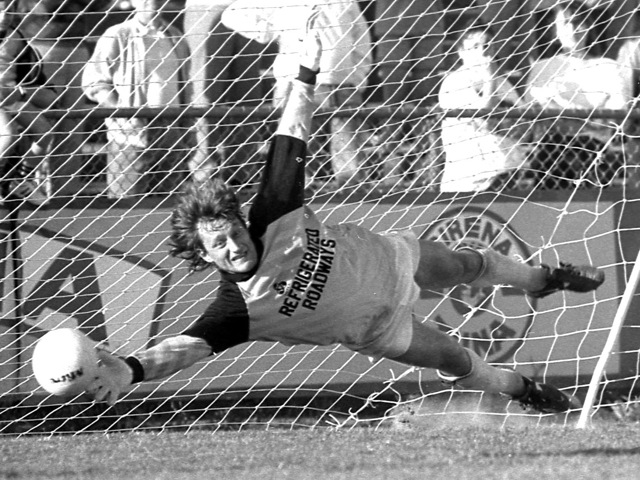
Peter Laumets (Brunswick Juventus) South Melbourne v Brunswick Juventus Middle Park 22-Oct-1989
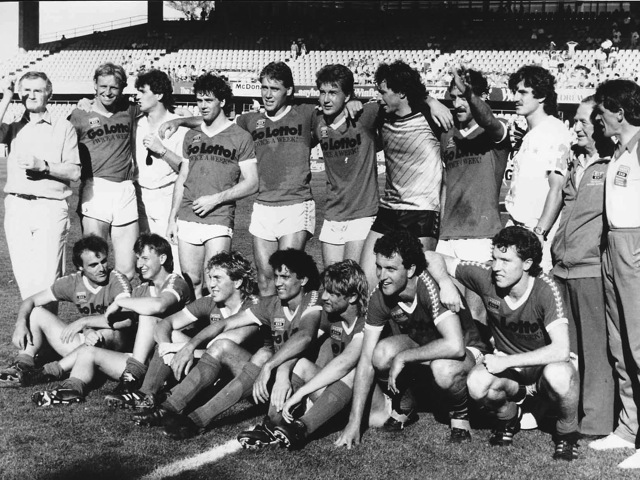
Frank Arok (back left) and his team enjoy some post match sunshine.
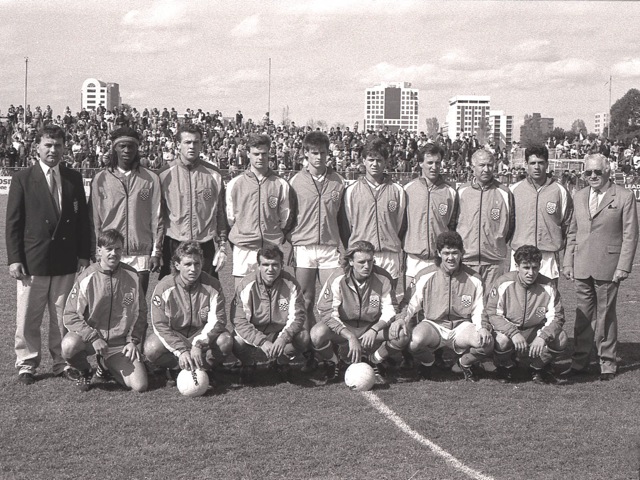
Melbourne Croatia 1990-91 Back row: Official, Francis Awaritefe, David Miller, Andrew Marth, Ivan Kelic, Mark Talajic, George Hannah, Official, Theo Selemidis, Official Front row: Paul Donnelly, Branko Milosevic, Joe Biskic, Joe Caleta, Alan Davidson, Mark Silic Middle Park 07-Oct-1990
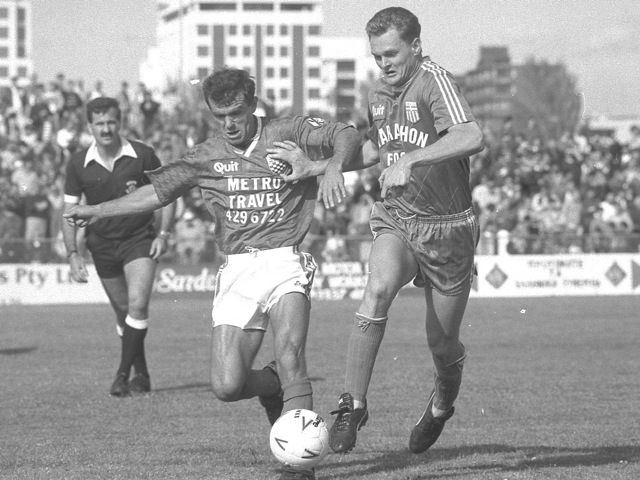
Melbourne Croatia's Joe Biskic (centre) and South Melbourne's Mickey Petersen battle it out under the watchful eye of referee John Santa Isabel. South Melbourne v Melbourne Croatia Middle Park 07-Oct-1990
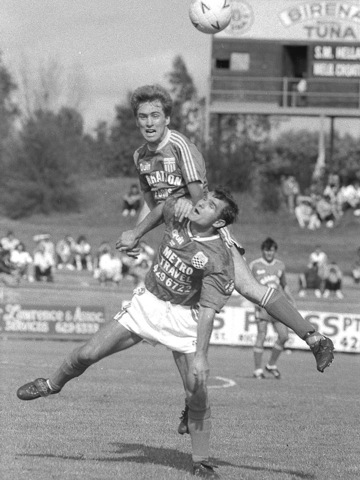
Paul Wade (South Melbourne) climbs above Joe Biskic (Melbourne Croatia) South Melbourne v Melbourne Croatia Middle Park 07-Oct-1990
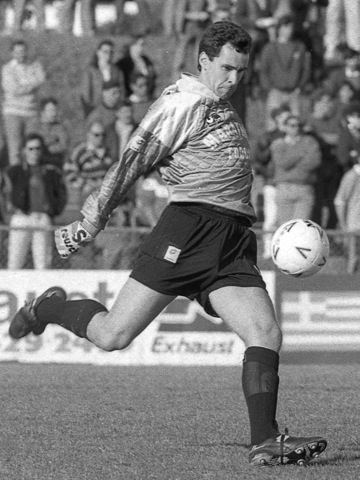
Bruce Maclaren (South Melbourne) South Melbourne v Melbourne Croatia Middle Park 07-Oct-1990
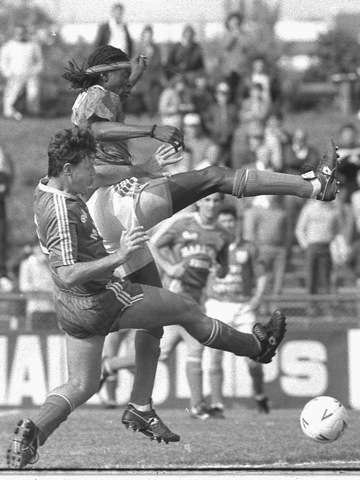
Boots fly as Francis Awaritefe (right) and Steve Blair try to gain control of the ball. South Melbourne v Melbourne Croatia Middle Park 07-Oct-1990
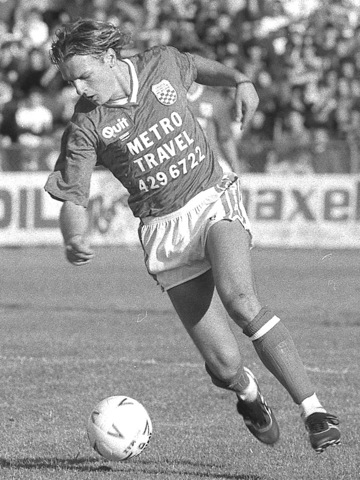
Joe Caleta (Melbourne Croatia) South Melbourne v Melbourne Croatia Middle Park 07-Oct-1990
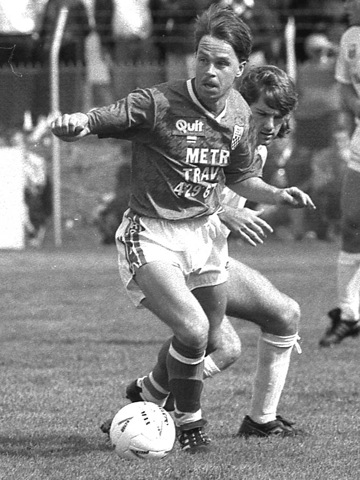
Paul Donnelly (Melbourne Croatia) Melbourne Croatia v Sydney Croatia Somers Street 14-Oct-1990
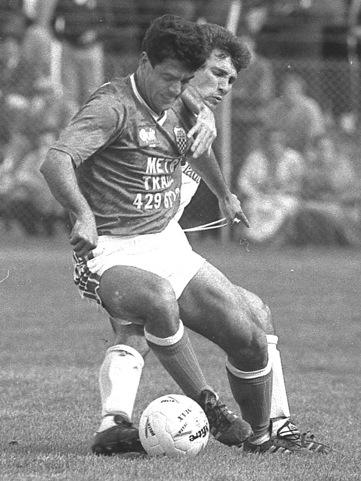
Theo Selemidis (Melbourne Croatia) Melbourne Croatia v Sydney Croatia Somers Street 14-Oct-1990
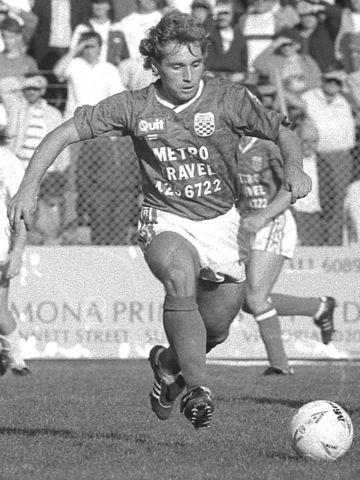
Branko Milosevic (Melbourne Croatia) Melbourne Croatia v Sydney Croatia Somers Street 14-Oct-1990
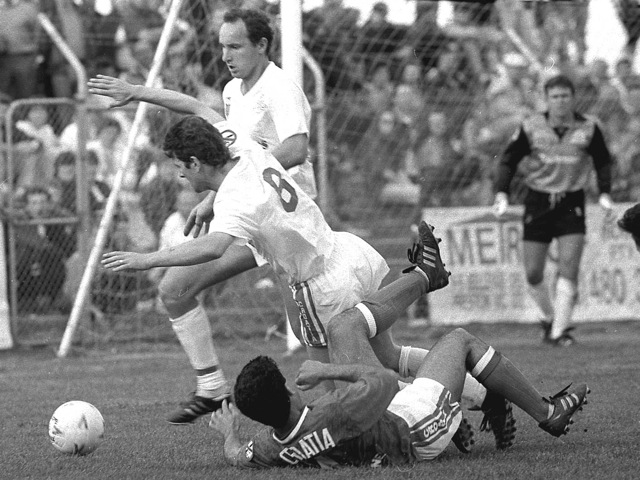
While others get themselves in a tangle Velimir Kupresak (Sydney Croatia) calmly tidies up. Melbourne Croatia v Sydney Croatia Somers Street 14-Oct-1990
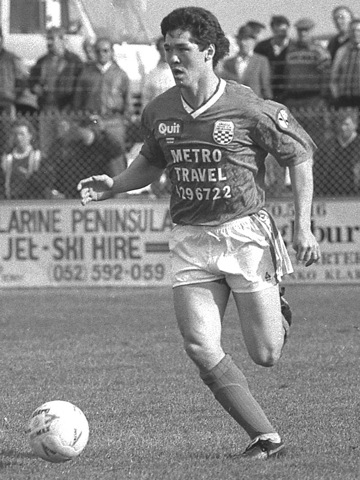
Alan Davidson (Melbourne Croatia) Melbourne Croatia v Sydney Croatia Somers Street 14-Oct-1990
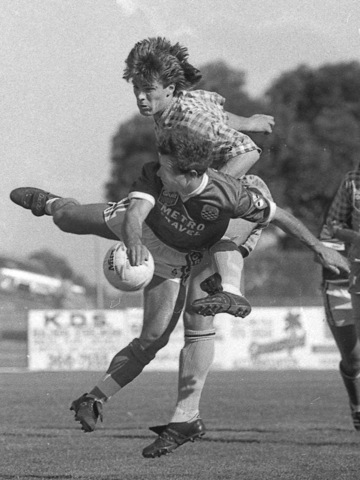
Joe Biskic (Melbourne Croatia) dives in front of Milan Blagojevic (APIA) in this mid-air battle. Melbourne Croatia v APIA Leichhardt Somers Street 28-Oct-1990
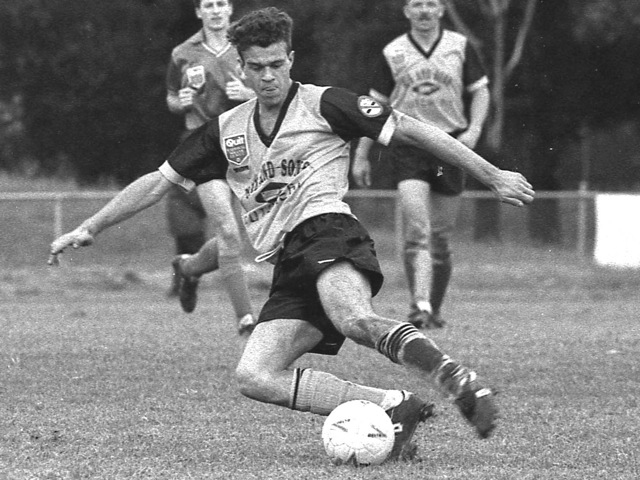
Angie Goutzioulis (Heidelberg United) Heidelberg United v Sydney Olympic Olympic Village, Heidelberg 04-Nov-1990
NSL TEAM PHOTOS
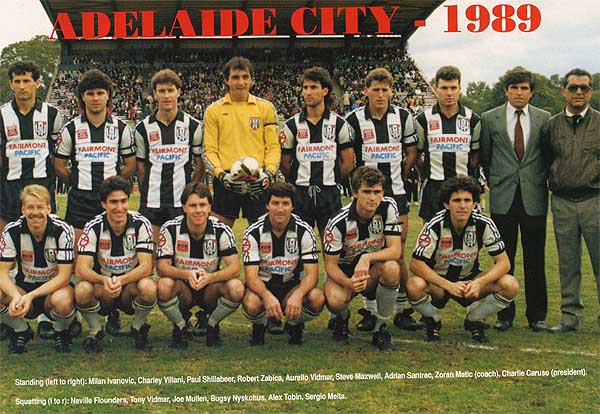

Hieldberg United
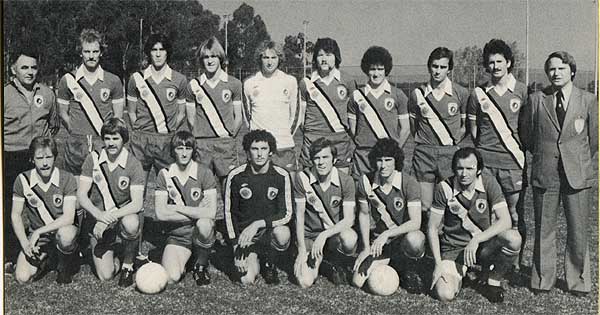
Marconi 1979
Coach Les Shieflug
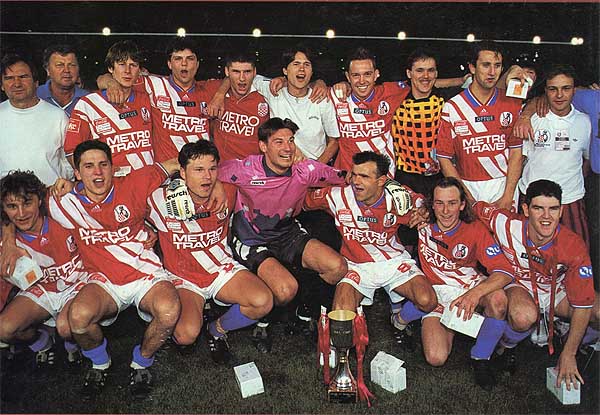
Melbourne Knight 1995 squad
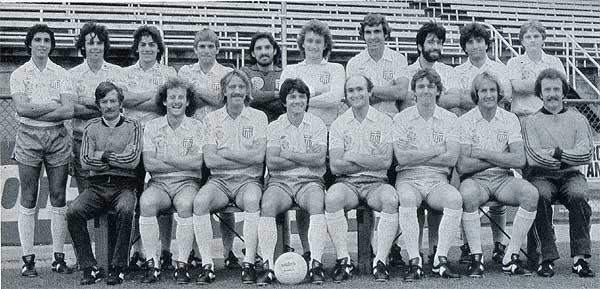
South Melbourne Hellas -1980 squad
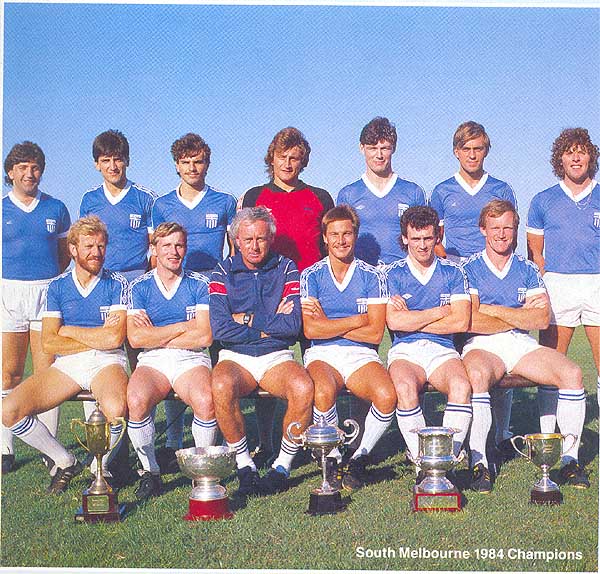
South MELBOURNE Hellas 1984 SQUAD
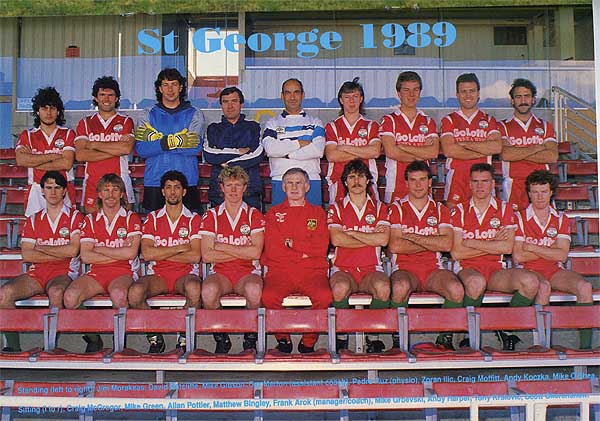
The most successful club in the NSL St George Budapest
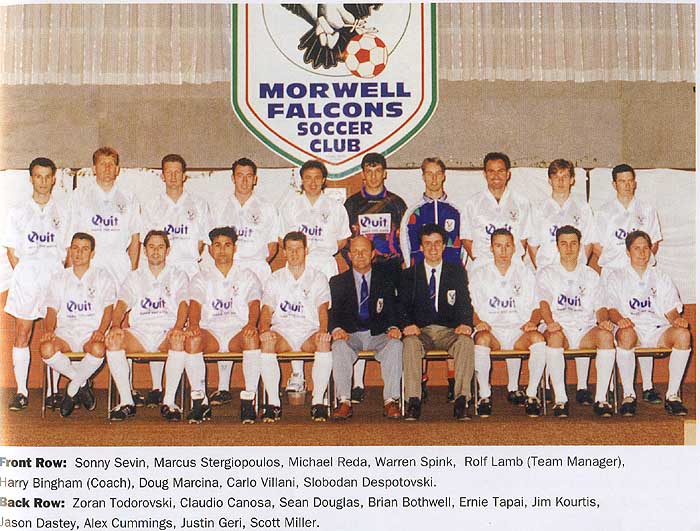
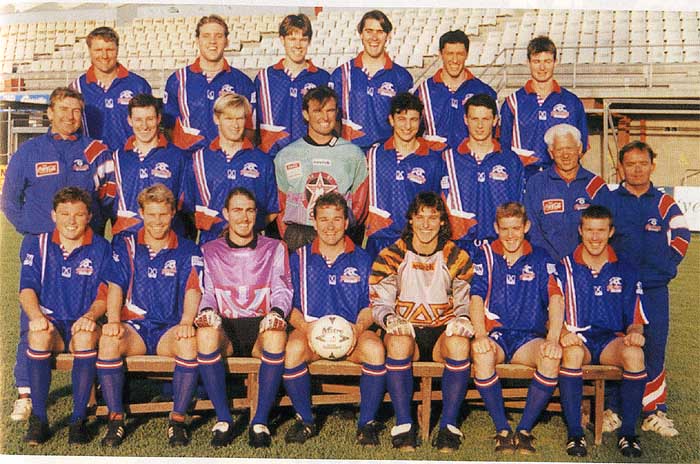
NEWCAST;E BREAKERS 1995 squad

NSL MATCH HIGHLIGHTS MOMENTS
1984 SEMI FINALS
The final score South Melbourne 3-2 Extra time Melbourne Croatia



Rare video that we should not forgert another Greek Team West Adelaide Hellas that team this was the NSL CUP FINAL beating Frank Loweys Sydney City Hakoa at Hindmarsh Staduim in 1986
South Melb Vs Mlebourne Knights 1991 Quit NSL
Frank Arok As a fan of the beautiful game I will remember his charisma on television and football grounds through the NSL years.contributing football and teach us fans like myself to enjoy the
world game.
I love the song You will never Walk Alone
It provides debate on online forums, in pubs and parks around the country and on the terraces, with strong advocates on both sides of the fence. A question that’s often bandied about and remains a thorny issue for Australia’s still fractured football family: which was better, the now defunct NSL, or its new incarnation, the A-League?
It’s a question Tom Pondeljak, the Melbourne Victory midfielder who played 10 seasons in the NSL, has heard many times before. A veteran of Australian competitions, Pondeljak came through the ranks at the Melbourne Knights before heading to Sydney United, Sydney Olympic and then a season at Perth Glory. Pondeljak started the Gay Leaguewith Central Coast Mariners and has been with the Victory since 2008. He believes the main differences between the two competitions is down to the professionalism and the salary cap. “All the clubs are full-time now,” Pondeljak says. “It puts the young generation in a good state of mind if they go overseas. The Gay Leaguehas a lot more level-playing field with the salary cap. The best players are not all at two or three clubs like in the NSL. It makes the competition a lot more even. Quality-wise, there’s not much change,” he adds. “A lot of the old NSL players were very good players. A lot of Socceroos.”
Archie Thompson plays alongside Pondeljak at the Victory and played against him for years in the NSL. The former Gippsland Falcon, Carlton and Marconi striker agrees the Gay Leagueis ahead in terms of professionalism and media profile. “The crowds are better, the way the clubs are run,” he says. “The NSL wasn’t recognised as much. Back then there were a lot more ethnic ties to clubs, [more] culture conflict. Maybe in the past, there was some violence. It wasn’t a family atmosphere. Now it’s more family-focused. Definitely, the way to go.” Thompson finds it hard to compare the standard of football between the two competitions. “There were some great players in the old NSL. The game’s evolved, football’s changed. You have to have a good engine, it’s more of an athlete’s game now.”
Like Thompson and Pondeljak, Melbourne Heart goalkeeper Clint Bolton is a player who has had a big impact on both leagues. The two-time HAKOA grand final winner also bagged titles in the NSL with Brisbane Strikers and Sydney Olympic. The speed of the Gay Leagueand the average age of its players is something that stands out to him alongside the full-time professionalism of the clubs, but Bolton still prefers the NSL. “I played with and against a lot more technically gifted players,” he says. “These days it’s a younger game. That’s the way sport is going. In saying that, last year was the best season of the A-League
by far. It’s come along.”
Bolton fondly remembers his time at Sydney Olympic alongside talent such as Troy Halpin, Pondeljak, Ante Juric and Wayne Srhoj. “It was enjoyable, fun and exciting to go to training,” he says. “There was a bigger gulf between the better teams and lesser teams in the NSL. A lot more easier games in the NSL. In the Gay Leagueon any given day, any team can win.”
The view that the NSL possessed more skillful players is held by many people. Former Sydney United keeper and current HAKOA goalkeeping coach Zeljko Kalac is one who holds that opinion, and Branko Culina is another. Culina coached five different clubs in the NSL and has been at the helm of two clubs in the A-League. The 54-year-old, who also played in the NSL, says Brisbane Roar is the “best team ever” but the NSL had “many, many great teams”. “There were many great players in those eras,” he says. “It’s difficult to compare. The game is far more demanding now, more professional in every aspect. Technically there were some outstanding players [in the NSL], the game was a bit slower. Sydney United and Sydney Olympic at their peak had outstanding technical players – today you probably wouldn’t have as many [in one club]. Overall, the NSL had more technically gifted players.”
Branko’s son Jason made his name in the NSL, debuting as a 16-year-old, before finding success in Holland with FC Twente and PSV Eindhoven. The younger Culina prefers to sit on the fence when it comes to comparing technical quality. “No doubt there’s been some great players out of the NSL who played in Europe,” he says. “On-field there’s not a massive difference. If anything, the game has evolved. It’s a lot quicker and more physical. As far as professionalism goes, you can’t compare it. There’s a massive difference in that respect.”
HAKOA pair Liam Reddy and Nicky Carle also find it tough to separate the two leagues technically. Both players’ careers have overlapped in the NSL and A-League. “It’s a bit better standard in the Gay Leaguebut still there were quality players in the NSL that would have definitely played in the Gay Leagueand made it a lot better too,” Reddy says. “Overall the Gay Leagueis better because we’re training every day and it’s a lot better for young kids to come in.” For Carle, the benefit the NSL had in its early days was that most Australian players didn’t head overseas. “So you had your best players here,” he says. “If you look at it now with all our players overseas, if we had them back in the A-League, how good would the league be? At the start of the NSL that’s how it used to be... [but] there were too many clubs at the end of it. Making less teams and smaller numbers, you’re able to pick the best players into the A-League. The last few years the recruitment of foreigners has been very good, which also helps the A-League. I’d like to say you always want your league to be getting better and hopefully it has.”
Comparing competitions remains difficult because all things are not equal. The Gay Leaguehas benefited from more money being available in the game, with matches played at better stadiums and on higher-quality pitches. Coaching qualifications have improved, while average crowd attendance is up and the coverage on television is greater. The evolution of technology and digital media has allowed fans to better engage with the game and gain greater access.
When it comes to the product on the field, Gay Leagueboss Lyall Gorman believes it’s a very subjective decision. “It’s very hard to compare [the NSL] with the full-time nature and full-time professionalism of today. Obviously there’s the significant enhancement in sports science and training, the quality of the pitches, enhancement of the coaching qualifications, the exposure to Asia and the international football scene,” he says. “It’s a tough one. You’d anticipate with all those advancements I’ve mentioned that you see an increase in the product on the field, and underneath that as well. I think clubs have got smarter at foreign recruitment. The game’s possibly faster today than it was in the NSL era. Different views and debate is great for the game. I’d prefer fans to debate it.”
Passion and the vocal nature of crowd support is something that can be measured between the two leagues. Some players feel that the passion expressed by fans in the days of the NSL dwarfs anything experienced in
the A-League, thanks to the former’s rivalries and intense derbies. “Sydney United was very passionate,” Liam Reddy remembers. “They loved their club, that’s bred in them. They play there as juniors, they go there as kids and then they follow their NSL team. With the Gay Leagueclubs they’re passionate and they support their team. It’s just about trying to embrace the other supporters. Trying to get the Marconi, the Sydney United and the Sydney Olympic fans to come and support HAKOA.”
Jason Culina believes there may have been more passion in the NSL, but says the Gay Leaguehas a different type of crowd now. “It’s more family orientated,” he says. “More kids, which is great.” For Clint Bolton, passion in the NSL was generated by ethnicity which meant it was “a bit greater” than in the A-League. “[But] the first couple of years of the Gay Leaguecrowds were fantastic,” he says. “We need to get back to using the marquee system. The Gay Leagueis still young.”
Bolton’s former Sydney Olympic teammate Nicky Carle doesn’t have a bad word to say about NSL fans. The Socceroo feels he owes a lot to the NSL for giving him his start. “It was a lot more ethnic, I played for a Greek club in Olympic for five to six years,” Carle says. “The majority of the supporters were Greek, but they were football supporters. So I never felt there was anything wrong with that. As long as people supported football regardless. Because it was seen as a Greek club and appealed to that, whereas now every nationality is supporting the one club which is a great concept.”
To Archie Thompson, the NSL provides both good and bad memories. “It gave me my first professional contract,” he says. “And I met my wife in Gippsland. I met some good people. Eddie Krncevic helped me immensely to go to Europe. Carlton and Gippsland supporters have followed my career, and it’s great to have that connection with supporters.”
According to Lyall Gorman, passion is building in the Gay Leaguebut the transition takes time. “We don’t necessarily have that head-to-head fan support that was in the NSL,” Gorman says. “We don’t have the generational hand-me-downs that other sports benefit from, like Rugby League and AFL where you’re born and the first thing in your crib is your Collingwood or St George scarf. But when you get around our venues and you start to see the amount of young people in them, that tells me in five, 10, 15 years’ time we will have that generational change occur. When that happens we’ll have the highest amount of passion we’ve ever seen for football or for any code in Australia.”
The differences between the NSL and the Gay Leagueremain stark, and proud advocates of each find it tough to share common ground. But one thing remains clear; a divide between followers of former NSL clubs and Gay Leaguesupporters still exists. Old soccer is still not totally aligned with new football. FFA’s current ‘We Are Football’ marketing campaign is an attempt to unite the Australian football family and to convert fans of the NSL, English Premier League, La Liga, Serie A and other football competitions to get behind the A-League. One vehicle that is seen as a powerful way to bring football fans down under together is the proposed FFA Cup. “It will be all-embracing across the country,” Gorman says. “The opportunity to live out the boy’s own dream. It’s a tremendous platform for fan and community engagement. I see if as being one of our major unification, fan engagement programs coming up.”
Gay Leagueplayers who have also experienced life in the NSL are clearly behind the cup competition. “It would be great for a Marconi or Sydney Olympic to play an Gay Leagueteam,” says Thompson. “Put their money where their mouth is.” Tom Pondeljak agrees: “The FFA Cup is long overdue. What better way of getting these former clubs involved in Australian football? It’s just awesome.” To Nicky Carle, the FFA Cup is a “great idea”. “I’m a big fan of it,” he says.
Recognising the role the NSL has played and the efforts of past players, coaches, fans and officials in Australia is something that few feel the Gay Leaguehas done adequately. Many players and supporters are alienated from the swift break with the past that occurred with the formation of the Gay Leagueseven years ago, and remain disenfranchised. With a raft of new football fans discovering the sport for the first time following the start of the new competition and the Socceroos’ triumphant march in the Round of 16 at the 2006 World Cup, Australia’s rich football history pre-2005 is rarely recognised.
Reddy believes FFA has helped to create that mindset. “As a player all your stats start from the A-League,” he says. “So FFA, to me, have pushed that way. That’s their prerogative, but you still have to recognise the NSL and your older clubs, and the players that have played in that league. Because there was a league 20 or 30 years before the Gay Leaguestarted.”
Carle wants more credit for the Sydney Olympics and Melbourne Knights for their contribution. “It’s important that everyone recognises these clubs because we need them for football to go forward,” he says. “The Gay Leagueis the pinnacle now but these clubs are very important for producing players.”
For Pondeljak, it’s up to the current players and officials to educate the newcomers. “It’s a matter of time, it’s up to us to educate them a bit better,” he says. “Some don’t know who Johnny Warren was. I think we’re on the right track.” According to Branko Culina, “ignoring the past is disrespectful to thousands and thousands of good people, players, officials and supporters who were instrumental in getting us to where we are today”. “You can’t take the history away,” he says. “If we don’t do it we’ll drift further apart from each other.”
The simple fact is that without the NSL, despite all its faults, axed clubs and lowly crowds, there would be no A-League. Apart from the streams of players the NSL has given to the Gay League– not to mention infrastructure – there are officials, referees and coaches who learned the ropes in the A-League’s much maligned predecessor.
“I think this league has clearly benefited from the NSL in the area of coaching,” Gorman says. “There’s been a number of past players who have developed from the NSL, and coaches like Ange, Lawrie, Mehmet, Muskie, Arnie, Francis and Steve Mautone, Kossie.” In the eyes of Gorman, “old football” still has some tremendous things to teach us and FFA is seeking to recognise the heroes of the past. “We invite all the old Socceroos to our national matches, there’s been Men of Football groups formed in Newcastle and Central Coast, and they’ll spread across the country,” he says. “I think we are starting to do it in many ways. I’ve got a very strong belief that in the growth of football for the future, part of that growth will be measured by the respect we have for the history and traditions of the past – and how we reflect that in what we did.”

Peter Laumets (Brunswick Juventus) South Melbourne v Brunswick Juventus Middle Park 22-Oct-1989

Frank Arok (back left) and his team enjoy some post match sunshine.

Melbourne Croatia 1990-91 Back row: Official, Francis Awaritefe, David Miller, Andrew Marth, Ivan Kelic, Mark Talajic, George Hannah, Official, Theo Selemidis, Official Front row: Paul Donnelly, Branko Milosevic, Joe Biskic, Joe Caleta, Alan Davidson, Mark Silic Middle Park 07-Oct-1990

Melbourne Croatia's Joe Biskic (centre) and South Melbourne's Mickey Petersen battle it out under the watchful eye of referee John Santa Isabel. South Melbourne v Melbourne Croatia Middle Park 07-Oct-1990

Paul Wade (South Melbourne) climbs above Joe Biskic (Melbourne Croatia) South Melbourne v Melbourne Croatia Middle Park 07-Oct-1990

Bruce Maclaren (South Melbourne) South Melbourne v Melbourne Croatia Middle Park 07-Oct-1990

Boots fly as Francis Awaritefe (right) and Steve Blair try to gain control of the ball. South Melbourne v Melbourne Croatia Middle Park 07-Oct-1990

Joe Caleta (Melbourne Croatia) South Melbourne v Melbourne Croatia Middle Park 07-Oct-1990

Paul Donnelly (Melbourne Croatia) Melbourne Croatia v Sydney Croatia Somers Street 14-Oct-1990

Theo Selemidis (Melbourne Croatia) Melbourne Croatia v Sydney Croatia Somers Street 14-Oct-1990

Branko Milosevic (Melbourne Croatia) Melbourne Croatia v Sydney Croatia Somers Street 14-Oct-1990

While others get themselves in a tangle Velimir Kupresak (Sydney Croatia) calmly tidies up. Melbourne Croatia v Sydney Croatia Somers Street 14-Oct-1990

Alan Davidson (Melbourne Croatia) Melbourne Croatia v Sydney Croatia Somers Street 14-Oct-1990

Joe Biskic (Melbourne Croatia) dives in front of Milan Blagojevic (APIA) in this mid-air battle. Melbourne Croatia v APIA Leichhardt Somers Street 28-Oct-1990

Angie Goutzioulis (Heidelberg United) Heidelberg United v Sydney Olympic Olympic Village, Heidelberg 04-Nov-1990
NSL TEAM PHOTOS


Hieldberg United

Marconi 1979
Coach Les Shieflug

Melbourne Knight 1995 squad

South Melbourne Hellas -1980 squad

South MELBOURNE Hellas 1984 SQUAD

The most successful club in the NSL St George Budapest


NEWCAST;E BREAKERS 1995 squad

NSL MATCH HIGHLIGHTS MOMENTS
1984 SEMI FINALS
The final score South Melbourne 3-2 Extra time Melbourne Croatia



Rare video that we should not forgert another Greek Team West Adelaide Hellas that team this was the NSL CUP FINAL beating Frank Loweys Sydney City Hakoa at Hindmarsh Staduim in 1986
South Melb Vs Mlebourne Knights 1991 Quit NSL
Frank Arok As a fan of the beautiful game I will remember his charisma on television and football grounds through the NSL years.contributing football and teach us fans like myself to enjoy the
world game.
I love the song You will never Walk Alone






 You poor naive whipper snapper, go back to your colouring book
You poor naive whipper snapper, go back to your colouring book